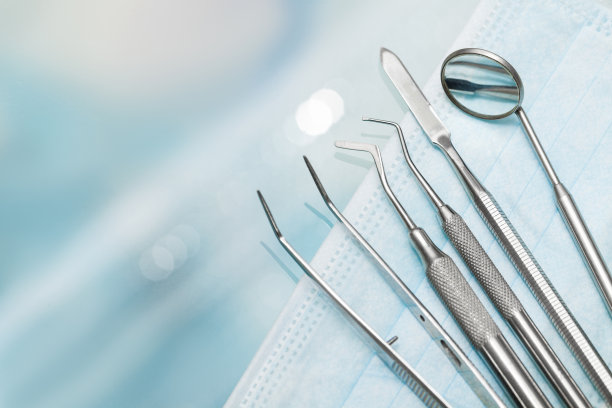The Essential Guide to Understanding When and Why You Might Need to Extract a Tooth
Summary: In this comprehensive guide, we delve into the crucial aspects surrounding tooth extraction, a common dental procedure that can sometimes be necessary for maintaining oral health. We explore the different circumstances under which tooth extraction becomes necessary, including severe decay, overcrowding, and periodontal disease. Additionally, we discuss the emotional and psychological implications of tooth loss and the importance of making informed decisions in consultation with a dental professional. Ultimately, understanding when and why a tooth may need to be extracted can empower patients to take proactive measures in their dental care and help in fostering better overall health.
1. Understanding Severe Tooth Decay

Tooth decay, or dental caries, is one of the most common reasons for tooth extraction. It occurs when the bacteria in plaque produce acids that erode the enamel, leading to cavities. If left untreated, this decay can progress to the inner layers of the tooth, causing severe pain and infection. In cases where the decay is extensive and the tooth cannot be restored with fillings or crowns, extraction is often the only viable option.
Furthermore, the presence of a decayed tooth can contribute to further dental complications. Infected teeth can harbor bacteria that may spread to other parts of the mouth, potentially leading to abscesses and systemic health issues. Therefore, opting for extraction in these cases not only alleviates immediate discomfort but also helps prevent more serious health problems down the line.
In some situations, patients may delay treatment due to fear or financial constraints. However, it is essential to alleviate myths surrounding dental procedures, as early intervention can often save a tooth. Consulting with a dentist as soon as signs of decay appear can make a significant difference in treatment options available.
2. Dealing with Overcrowding Issues
Overcrowding can arise when there is insufficient space in the mouth for all the teeth to align correctly. This dental condition often leads to misaligned bites, increased risk of cavities, or even gum disease. In orthodontics, tooth extraction is sometimes recommended to create additional space and achieve optimal alignment during braces treatment.
By removing certain teeth, orthodontists can facilitate better overall dental health and set the stage for a more harmonious smile. It may initially seem counterintuitive to remove teeth to improve dental health, but strategic extraction plays a crucial role in achieving long-term results. The right consultation can ensure that patients are informed about how extraction can aid orthodontic processes.
The emotional impact of overcrowding should also not be overlooked. Patients may feel self-conscious about their teeth and smile, which can affect confidence. By opting for extraction as part of a comprehensive treatment plan, individuals not only improve their oral health but also enhance their self-esteem and overall quality of life.
3. Recognizing Periodontal Disease Risks
Periodontal disease, or gum disease, is another critical consideration when discussing tooth extraction. This condition results from the accumulation of plaque and tartar, leading to inflammation and eventually damage to the supporting structures of the teeth. In advanced stages, Periodontal disease can cause loose teeth, necessitating extraction to promote a healthier mouth.
A tooth affected by severe gum disease can become a source of ongoing infection and discomfort. It can also affect the surrounding teeth and overall oral health. Therefore, prompt extraction may be recommended as part of a broader treatment plan to mitigate the impact of periodontal disease and promote healing.
Moreover, periodontal disease is not just a local issue; it has systemic health implications. Research indicates a link between gum disease and conditions such as diabetes and cardiovascular diseases. By addressing periodontal issues through extraction, patients can contribute to better overall health and potentially reduce risks associated with these systemic conditions.
4. The Emotional and Psychological Impact of Tooth Loss
Tooth extraction can have profound emotional and psychological effects on individuals. Many people experience anxiety or sadness at the prospect of losing a tooth, as it can alter ones appearance and self-perception. It is essential to recognize these feelings and to have supportive conversations about the necessity and benefits of extraction when it is required.
In addition to personal feelings, societal perceptions of smile aesthetics can amplify emotional distress. Many individuals feel self-conscious about gaps in their smiles, which can lead to avoidance behaviors in social situations. However, addressing these feelings should be part of the broader conversation with dental professionals, who can offer solutions such as dentures, implants, or bridges that can help restore confidence.
Ultimately, having clear communication and a collaborative approach with dental providers can significantly mitigate these emotional challenges. Understanding the rationale behind tooth extraction and exploring options for restoration can empower patients, helping them envision a brighter dental future.
Summary:
In conclusion, understanding when and why tooth extraction may be necessary is vital for maintaining optimal oral health. From severe decay to overcrowding and the impacts of periodontal disease, each situation requires careful consideration and consultation with a dental professional. By educating patients about these issues, we can help them make informed decisions and manage the emotional ramifications of tooth loss.
This article is compiled by Vickong Dental and the content is for reference only.



